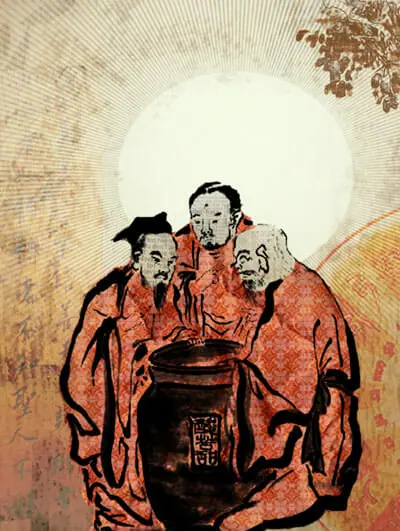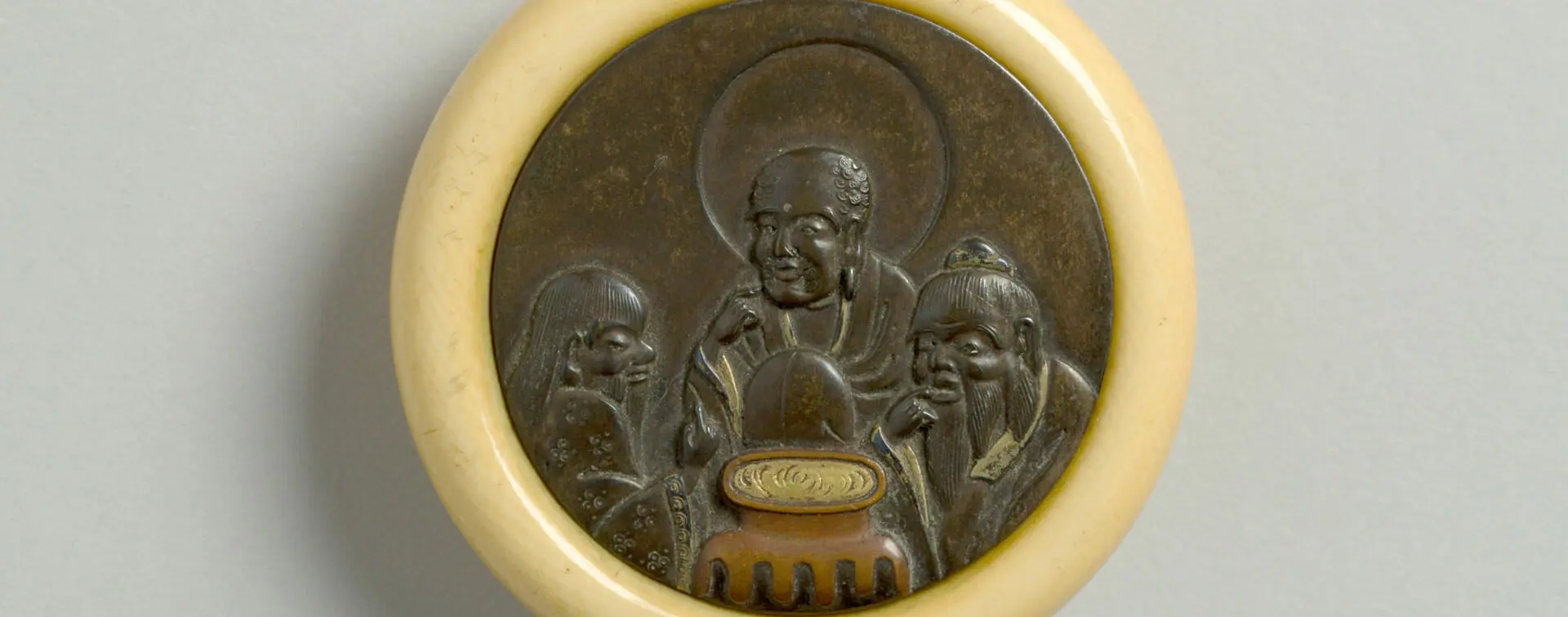In the West, religious people usually identify with one particular faith e.g. Catholicism, Protestantism, Islam, Judaism, etc. In China, things are not so simple, and a question about belief systems1The comparison is being made here between Western and Eastern belief systems. The Chinese systems are more properly referred to as philosophies than as religions, although some systems of thought come close to our Western sense of religion in their practices. could result in a pluralistic answer along the lines of:
“When I’m in society I am Confucian; out walking in the countryside, I’m a Daoist; thinking about my troubles and reflecting on human nature in a spiritual way, I’m a Buddhist.”
As a famous saying goes: the Chinese wear a Confucian hat, Daoist sandals and a Buddhist robe.
The three major philosophies of China, the sanjiao, complement each other: each present a different way of engaging with and understanding different aspects of our lives.
The teaching of Confucius offers a system of ethics guiding our interactions with others in the social and governmental realms. Daoism teaches us about our connection with elements and energetic flows that are fundamental to the human, animal and natural world. Buddhism helps us better understand the highs and lows of life in a realm beyond day-to-day material concerns.

This picture shows our three philosophers tasting vinegar. The picture is an allegory for how we experience life. Confucius has a sour look on his face, suggesting that we are in need of education and cultivation to bring ourselves back into harmony with one another and the universe. Buddha wears a bitter expression indicating how we bring suffering upon ourselves with our cravings, aversions and delusions, which we struggle to move beyond. Laozi however is smiling! To find out why we will have to delve into the teaching of Daoism…
The combination of these three ancient schools of thought has yielded a rich weave of philosophy that is peculiar to China. As students of Tai Chi, it can be of great benefit to be aware of the central tenets of these different teachings and the relationships they have to our practice and our daily lives.
In this series of articles we will be exploring some key aspects of the sanjiao. The first set of articles gives a brief historical overview of the great teachers for each school of thought. We will later have articles on the theory and practice of each philosophy.

Before drinking at the wells of these three great houses however, we must pay homage to the oldest known book of Chinese philosophy. This is the Zhouyi, the core of the I Ching (Yijing), known in the West as “The Book of Changes”. This ancient text serves as a bedrock, a source of wisdom at the heart of Chinese philosophical thinking and practice and can be seen as an influence running through and linking together different territories of the sanjiao. Here we find some of the fundamental concepts of Tai Chi, including the theory of yin and yang which is so central to our practice.
Zhouyi maintains that everything in the world has yin and yang. Not separate opposites, as in our Western sense of disjunction, but existing in a relation of mutual containment, each transforming into the other in a movement which is formative of the Dao itself.
When we study the sanjiao it may be helpful to bear in mind that the teachings of these three philosophies can perhaps, with the right approach, be understood not as existing in opposition to one another, but as together forming a richly textured resource for understanding the nature of reality (ontology) and how we should live (ethics).
